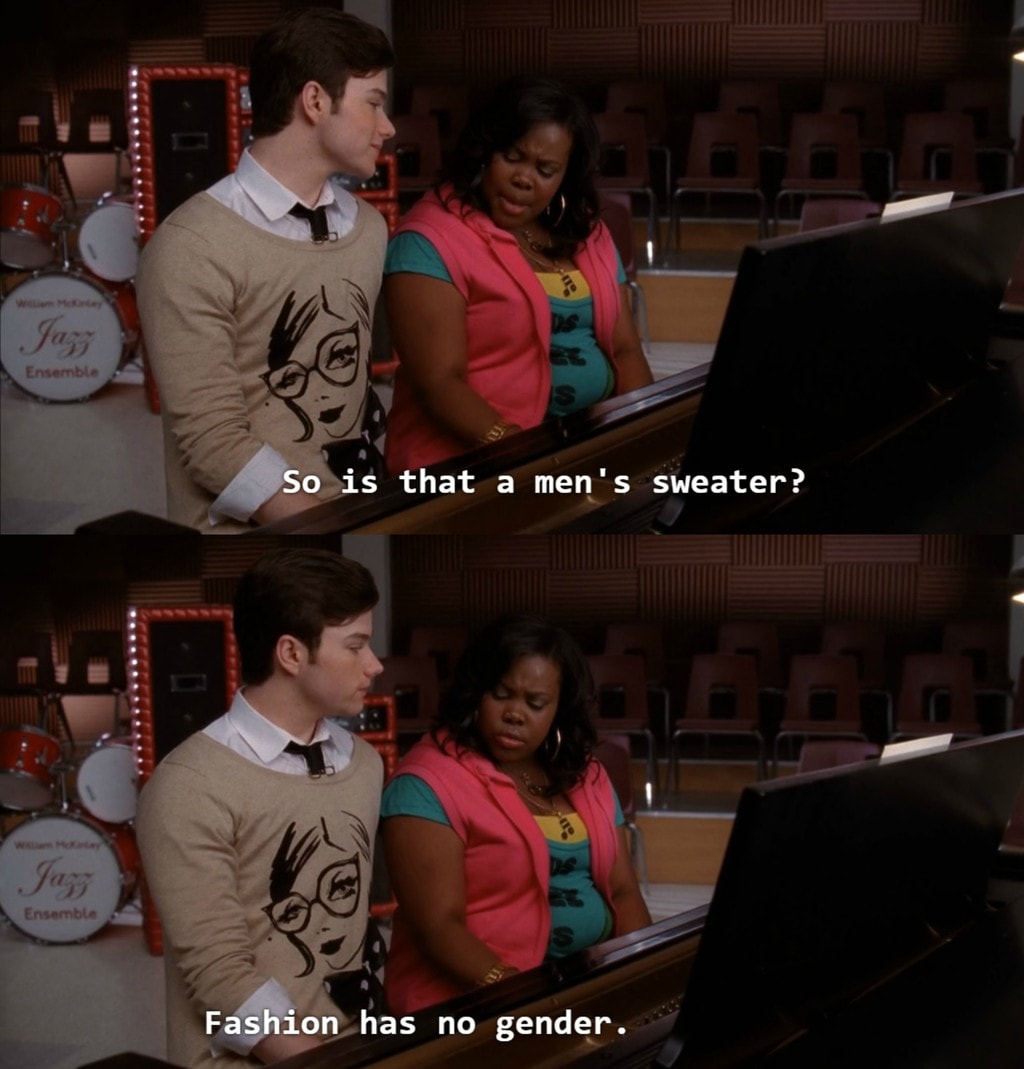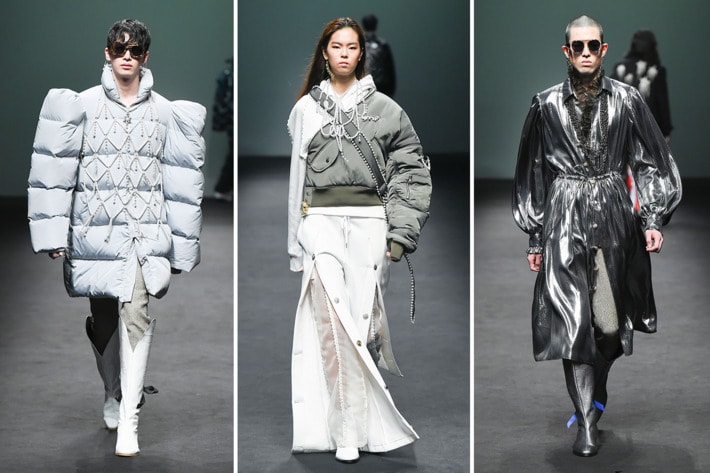In the words of the fashion icon and Glee superstar Kurt Hummel, “Fashion has no gender.”
While Kurt is not wrong in this regard, there are still deeply entrenched societal expectations of what is and isn’t appropriate for men and women to wear. However, accepting this limits not only our opportunities for fashion experimentation but also our understanding of the complexities of gender identity and expression.
This week, I’ll be diving into gender identity and expression as they pertain to fashion. This is by no means an exhaustive analysis: It would take hundreds of pages to fully explain the relationships between gender and fashion. Instead, this article should serve as an introductory step into the nuanced world of gender identity and expression.

Table of Contents
What is Gender Expression?
In the past, gender was viewed through a strict binary: you were either male or female. However, through the recent work of activists, we’ve seen increased acceptance and dialogue surrounding gender identity and gender expression, and a growing realization that gender cannot be summed up as quickly as checking “M” or “F”.
Now, after reading the above, you may be wondering “what is the difference between gender identity and gender expression?” The basics are as follows:
Gender identity is defined as “one’s innermost concept of self as male, female, a blend of both or neither,” which is not necessarily the same as the sex one was assigned at birth.
Gender expression, on the other hand, is how one demonstrates their gender identity, through things like behavior, clothing, their haircut, etc. and it may not necessarily fit neatly into the dichotomy of masculinity and femininity.
How Does Fashion Fit In?
Fashion is the most obvious way in which we express our gender identity but is not by any means the only way. There are many methods of gender expression, fashion being just one piece of the puzzle. Yet, for its visibility across cultures and languages, fashion is worth examining in depth.
Fashion provides a fantastic, easily accessible opportunity for one to experiment with the boundaries of gender and play with the traditional roles of masculinity and femininity. Fashion can allow space for rebellion from social norms, and space for experimentation, something that anyone, regardless of their gender, should be open to pursuing.

Masculinity v. Femininity v. Androgyny
Typically, there is far less social stigma attached to a woman dressing in a more masculine style; in that case, she’s “just a tomboy.” But the stigma is still very real and young men and boys have far fewer positive or neutral terms applied to them when they dare to dress outside the gender norm.
One way to look at gender expression is to think of it as a spectrum with masculinity and femininity at either end and with androgyny smack dab in the middle.
Androgyny has been seeing popularity in mainstream fashion, with brands like Target releasing a gender-neutral clothing line for children and H&M releasing a gender-neutral denim collection. But the issue with many retailers is that when they set out to create a theoretically neutral line of clothing, they end up “[marketing] silhouettes that are plain and more menswear-inclined as unisex.”
H&M’s Denim United is one of the more impressive lines of gender-neutral clothing available today because it bucks the tradition of attributing neutrality solely to masculine pieces. Instead, it includes traditionally feminine pieces, like denim dresses, made for both men and women. But the majority of the pieces are still more traditionally masculine looks that are just being marketed to women.
This begs the question: is true gender-neutral clothing even possible to create?
What can gender-neutral fashion look like?
Maybe striving for a truly gender-neutral fashion world doesn’t mean creating pieces that were never masculine or feminine in the first place. Maybe instead, gender-neutrality in fashion simply implies a rejection of those gender norms that decided what looks were masculine or feminine. Rather than creating gender-neutral lines, maybe retailers should strive to create more androgynous collections that take the best from masculine as well as feminine looks and combine them into cultural and fashion statements.
Men, women, and all those who identify somewhere along or outside of the gender binary should be able to wear what they want to wear because they want to wear it. It’s worth hoping that fashion will fully accommodate these preferences one day.
Fashion should make you feel comfortable and confident and that looks different for different people. Fashion is your most obvious form of personal expression, so why confine yourself to just one side of an outdated dichotomy?
Thoughts?
I realize that this article barely touches the surface when it comes to the topic of gender expression, so I’d love to hear your thoughts, especially if there’s something big that I missed! How do you feel about designers’ attempts to be more inclusive with your designs?

Thanks for covering this! So important. I love reading CF because it’s not just about fashion, but how fashion relates to our society 🙂